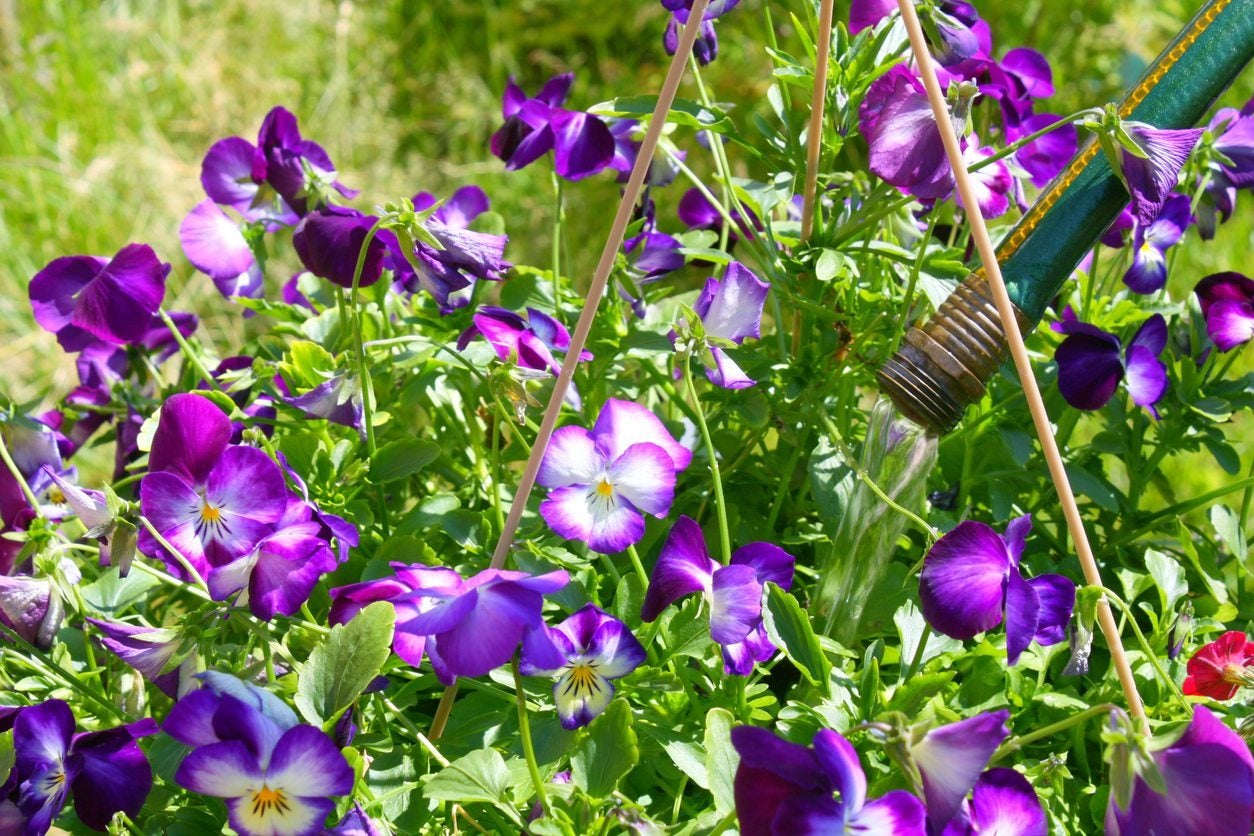Watering Hanging Baskets : How Often Should I Water A Hanging Basket


Hanging baskets are a display method that adds vertical beauty to any location. Whether you make your own or purchase a planter, this type of planting requires extra water and nutrients as compared to in-ground plants. Watering hanging baskets is a more frequent project because the ambient air dries out the container quickly. It can be tricky to know when to water hanging baskets because they are often out of convenient reach for a touch test and their requirements are very different. If you are wondering, "How often should I water a hanging basket," read on for answers.
How Often Should I Water a Hanging Basket?
Hanging baskets are eye-popping beauties that draw the eye upward and create decorative spaces where normally plants don't grow. They are also useful in bringing the garden closer to the patio, lanai or deck. Hanging basket water requirements are more defined than in-ground plants, because soil doesn't harbor moisture and much of the water will void through drainage holes and from the container exterior. Watering hanging baskets requires much more of a deft touch and a bit more management. The frequency with which you water a hanging basket will depend upon the time of year, its site and the type of plants installed. It may also depend upon how many plants are in the container. Tightly crowded plantings need more moisture than those that are sparse. Plants in full sun will dry out quickly and need supplemental irrigation often. Drought tolerant plants, herbs and some succulents can tolerate dry soil for a longer period of time than flora such as hanging petunias, tomatoes or other fruiting plants. All these conditions affect hanging basket water requirements and should be taken into consideration. One way to determine when to water hanging baskets is the "touch test." If soil is dry to the touch 2 inches (5 cm.) into soil, it is probably time to water. If the drainage hole soil is dry, you have probably waited too long and a good soak to rehydrate the plant is in order.
How to Water a Hanging Basket
The method you use will vary, but often it is sufficient to use a good long handled water wand. Use a light delivery setting, avoiding "jet" as a rate of delivery. Gentle soaking will allow water to penetrate and expand the soil capillaries, keeping moisture in longer so plant roots can uptake water. Again, crowded plants or heavy water users may require watering daily in summer, as there is not sufficient space to store moisture. Another way of watering hanging baskets is to soak them. Fill a basin or bucket and submerge the bottom of the container for half an hour. This allows the roots to fully absorb necessary moisture. Container plants have a limited amount of nutrients available to plants, so feeding them is essential. Frequent feeding, however, can result in buildup of salts from fertilizer. Leaching the soil or overwatering until water pours through the drainage soils can help drain the salts. This should be done at least once per month during the growing season. Perennial hanging baskets need to be repotted once per year in early spring or before major growth occurs. This will loosen compacted soil and roots, giving better growth and moisture management, as well as introducing nutrients to the plant. Hanging baskets are a unique way to bring greenery and flowers up close to the home. Their special requirements are easy to manage provided you do not neglect the containers and consistent moisture and nutrients are available.
Gardening tips, videos, info and more delivered right to your inbox!
Sign up for the Gardening Know How newsletter today and receive a free copy of our e-book "How to Grow Delicious Tomatoes".

Bonnie Grant is a professional landscaper with a Certification in Urban Gardening. She has been gardening and writing for 15 years. A former professional chef, she has a passion for edible landscaping.
-
 Types Of Tomatoes Explained: Explore The Many Wonderful Shapes, Colors, Flavors, & Best Uses
Types Of Tomatoes Explained: Explore The Many Wonderful Shapes, Colors, Flavors, & Best UsesThe world of tomato varieties is vast and fascinating. Learn about the key types to grow in your garden, tailored to your preferences and space.
By Amy Grant
-
 Try The Trend – Turn Any Bed Into A Keyhole Garden With This Clever In-Ground Composter
Try The Trend – Turn Any Bed Into A Keyhole Garden With This Clever In-Ground ComposterKeyhole gardening is an efficient and sustainable practice that saves space. Get started on this DIY project quickly and easily with an in-ground composter.
By Bonnie L. Grant